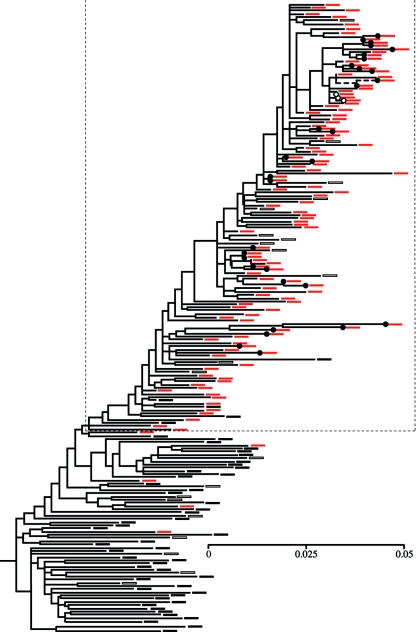FIG. 1.
Maximum likelihood phylogeny of HERV-K(HML2) LTRs. Filled and open circles indicate LTRs from full-length and segmentally duplicated elements, respectively. Black boxes represent taxa present in both the chimpanzee and human genome sequences, whereas red boxes represent human-specific elements. Intermingling of the two classes is probably due to a variety of factors, such as gene conversion or ancestral polymorphism. Open boxes represent taxa whose distribution could not be determined directly (the chimpanzee genome project is incomplete), and their probable distribution was estimated from their position in the phylogeny. A dashed line indicates the placement of K113, which is absent from the published human genome sequence. The large boxed region (which excludes most non-human-specific elements) in shown in more detail in Fig. 2. Scale bar shows mean number of substitutions per site.

